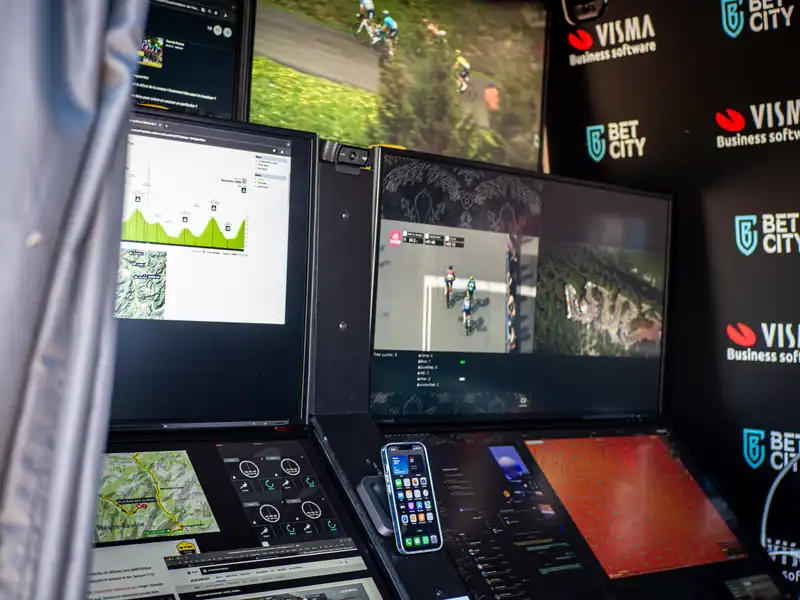Much has been said about the legality of Visma Lease-a-Bike's brand new "control room," and in recent days the UCI has launched an investigation into it, banning entry to the TDF grounds.
But what is the reality: when the UCI announced the aforementioned investigation, the team's general manager, Richard Plug, said, "Tours are welcome." The day before the Tour kicked off in Florence, Cycling News visited the Visma Hotel in Pistoia for that purpose.
In the video below, Mathieu Heyboer, the team's performance director, gives a tour of the setup and offers insight into how he thinks it compares to other teams.
We got into a Volkswagen Crafter van. For a team that is often tight-lipped about their innovations, this was a refreshing, yet perplexing attitude. It seemed as if the team was trying to prove something to the UCI. Regardless, I took the opportunity to try to get as much information out of them as possible.
"What we really haven't done, and what I really want to emphasize is that we don't capture anything from the bikes. All we can do is use television footage and everything that is publicly available."
The internal "control room" consists of six computer monitors, an iPhone, and two laptops. Each screen displays a specific stream of information.
The upper left screen is divided over six separate streams of TV cameras from various sources, including racing, motorcycles, and helicopters. To its right, the main TV feed is shown in full screen.
Below that, additional data begins to appear. On the left side, weather data around the race course is displayed in four sections, and on the same monitor, ProCyclingStats data is displayed showing the start list and Tour de France route information, which can probably be used to search for additional information about the riders and route It is a typical web browser.
The center-right screen uses some interesting software. Simply put, this is automatic jersey recognition software, which is superimposed on the live TV image. The software counts the number of jerseys for each team in the picture and continuously updates the count if a rider is out of sight or out of the group altogether. The tally is displayed below, allowing those in the van to see how many riders from each team are in the breakaway or peloton.
The bottom monitor combines more information and communication, allowing teams to communicate insights and instructions to team cars. On the left is a stream from the social media platform X (formerly Twitter) that shows all tweets about the race as soon as they are posted. At the time of my visit, the stream for the recent Criterium du Dauphiné was set up, but according to Haiboer, this was merely an example and was not used for the Tour de France warm-up race.
On this right side, information from VeloViewer is added to route information from ProCyclingStats, and alongside the multi-clock timer app, teams can count the seconds between groups of riders and perform calculations to chase down breakaway groups.
On this lower right screen is a second WhatsApp chat, presumably connected to the account of the person sitting in the chair to the right. On the same screen, the Teams app is open, connecting the control room to the team car. Between the monitors is a webcam, which can send a video stream if needed.
At least three Apple Mac Mini computers are used for setup, as well as videoconferencing peripherals, including numerous speakers and desktop microphones.
Heijboer explains that the van will not be used for every stage, but will be used for select important stages.
The control center, paid for and designed by sponsors Bet City and Visma, is described in various ways. Some say it is a positive step forward for cycling in terms of safety, sharing the important dangers that lie ahead, while others say the opposite, that it is yet another nail in the coffin of the sport's romanticism and traditionalism.
Some even tout it as a mere marketing ploy by publicizing a technique that countless other teams have already adopted and have employed before.
"A lot of teams have a coach behind the TV who calls in with the sports director. 'Frankly, this isn't much different than that. Honestly, this isn't much different than that.
"Any self-respecting team has a coach sitting on the couch watching TV.
.

Comments